If Howth is the Dublin day trip to experience a quiet seaside village, then a day in Dún Laoghaire is one for experiencing true Irish life. Dún Laoghaire is home to a bustling city center; a waterfront area complete with a harbor, promenade, and piers; not to mention the Irish National Maritime Museum.
Get to Know Dún Laoghaire
Pronounced Done leery, Dún Laoghaire lies on the Republic of Ireland’s east coast. The town is less than eight miles southeast of Dublin’s city center.
Modern Dún Laoghaire goes back to 1821. Prior to that the town was known as Dunleary. The name changed to Kingstown to commemorate a visit by King George IV in 1821. But the town reverted to Dún Laoghaire, the Irish version of Dunleary in 1920.
The name itself originates from the 5th century when an Irish king, Laoire, built a fort in what today is the center of town. The fort did not stand the test of time, however. It was eventually replaced in the early 19th century before being removed altogether when a rail line was brought into town.
The harbor that so dominates the town was the catalyst that spurred Dún Laoghaire. In 1817, the harbor was established to accommodate larger ships. The location, being near to Dublin, was a big benefit.
With the addition of a rail line from Dublin roughly 20 years later, the city was an up and coming town. Dún Laoghaire, then Kingstown, was a popular seaside getaway.
Things to Do in Dún Laoghaire
You can still see traces of Victorian Kingstown across today’s Dún Laoghaire. The downtown area is full of carefully crafted brick buildings, such as the city council building which sports a handsome clock tower. There are Victorian touches along the waterfront, from a simple gazebo to fountains that offer charming ornamentation.
If you visit only for a stroll down the waterfront piers and promenade, through the town and then a bite to eat, Dún Laoghaire is worth a stop. But there are more spots in this Dublin suburb to attract your attention.
While Dún Laoghaire may have once been a seaside resort, today it’s a busy and functioning town. In Dún Laoghaire you’re a part of everyday authentic Irish life, a fact that is no doubt appealing to us tourists. You don’t have to simply waltz through town. You can go on an adventure and get caught up in everyday life.
Or, why not become a part of town life? The town keeps a busy calendar of events that visitors can enjoy year round.
Just down the road, right along the waterfront, you’ll find the James Joyce Museum inside of a rotund Martello tower. Nearby is Forty Foot, a popular swimming spot year round that’s set amongst the rocky coast.
Dún Laoghaire Harbor, Promenade, & Lighthouses
Dún Laoghaire’s harbor is quite large with two piers jutting out into the Dublin Bay. The aptly named East and West Piers are popular spots for a walk, jog, or merely to marvel at the view. Those Victorian touches that I mentioned are prominent features on the East Pier. There are a gazebo and a bandstand from 1890 that still see action during special events. At the very tip of both piers is a lighthouse. The West Pier is longer than its partner but is generally sees fewer crowds.
The piers act as a buffer to 250 acres of waterfront area within the harbor. The spot is home to the Dún Laoghaire Motor Yacht Club, the Irish National Sailing School and Club, as well as a number of other yacht and boat clubs (Royal Irish Yacht Club, Royal St. George Yacht Club, National Yacht Club, Irish Youth Sailing Club), rowing clubs and more. Dún Laoghaire has an active watersports scenes, as well, from sailboats to paddleboards.
National Maritime Museum of Ireland
With such an active and busy waterfront and a long history, it’s no surprise that Dún Laoghaire is home to Ireland’s National Maritime Museum.
The museum calls the one-time Mariners’ Church home. The church was built in 1837 and served seafarers until 1971. Seven years later the church transitioned to the museum. The church itself, with its beautiful stained glass windows, is as much on display as the maritime exhibits. Among the items on display, visitors can see the working light from the Baily Lighthouse in Howth as well as an extensive collection of ships in bottles.
Downtown Dún Laoghaire
It’s only a short, easy walk from the harbor to the heart of Dún Laoghaire. Just up Marine Road to George’s Street. And the busy town has everything one could want: theater, cinema, shops, galleries, pubs, a variety of coffee shops, and so on. There’s even an architecturally impressive, and still relatively new, library just next to the Maritime Museum.
Just off the main high street, you’ll find homes and apartments. Charming spots, some with roses or other hedgerows growing out front. And that sea view of the Dublin Bay is never far away.
Dining in Dún Laoghaire
With a busy city center and a lovely waterfront, there are choices to be made for diners in Dún Laoghaire. My husband and I opted for a lunch at Wetherspoon’s The Forty Foot, a family-friendly restaurant/pub with a large menu. The restaurant’s real selling point, however, is the view it offers. Diners can sit at a table on one of the building’s multiple storeys, either indoors or out, to enjoy unobstructed views of the Dublin Bay, the harbor and the East Pier. Not hungry? No problem. Simply grab a table and a drink to relax with the waterfront.
Dún Laoghaire offers a variety of restaurants from pubs to fine dining. There’s also no shortage of coffee shops for coffee, tea or something sweet. You can find Irish independent coffee chain Insomnia Coffee set right along the waterfront.
Where to Stay in Dún Laoghaire
If you’re looking for more than a day trip to Dún Laoghaire or merely need a place to rest after a day on the sea, have no fear. There are lots of places to stay in town, for every budget. For proper hotels, you have a couple options. There’s the impressive 4-star Marine Hotel just across the street from the East Pier; and they offer a delectable looking afternoon tea, it must be said. Or, you can opt for Haddington House, a boutique full of charm and character. Similarly, there are a number of bed and breakfasts to choose from if you’re looking for a more authentic and personal experience. There’s also a youth hostel in town, too.
Getting to Dún Laoghaire
Visiting Dún Laoghaire as a day trip from Dublin, or nearby, is very easy. There are numerous Dublin bus routes that conveniently stop in the town (7, 7a, 9, 45a, 59, 75, and 111 at the time of writing). There is also a regular Dublin Area Rapid Transit (DART) train between the capital city and Dún Laoghaire.
If you’ll be driving, there are spots available both on the street as well as in parking garages (or car parks, if you prefer). The town has a really helpful map of all the parking options and the associated fees.
Save this post for later on Pinterest!
All photos, as well as all opinions, are my own. This post contains affiliate links.
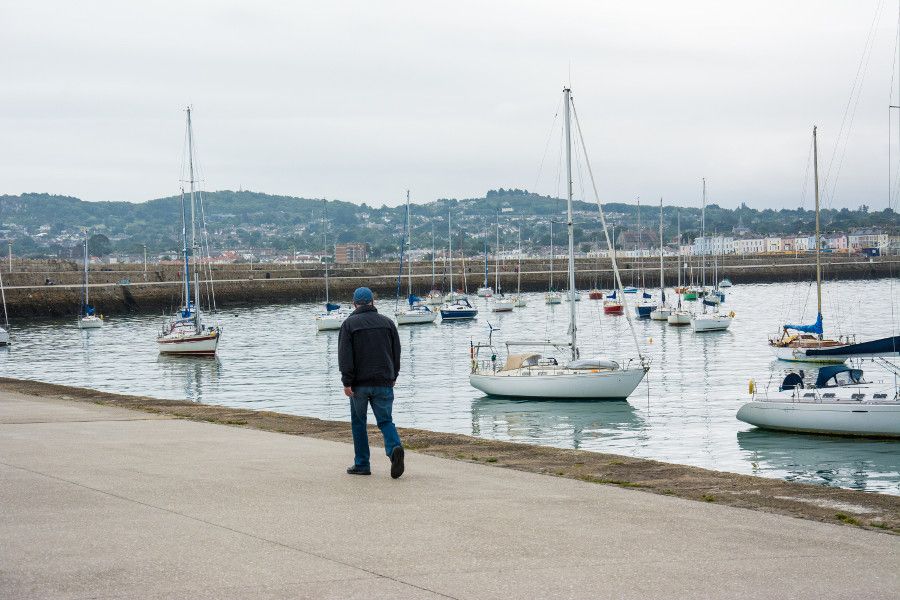
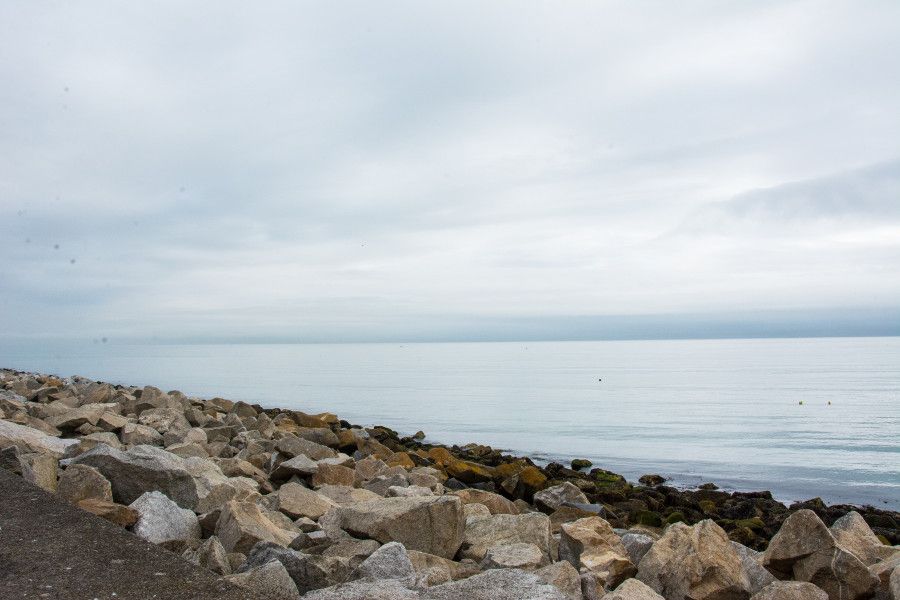
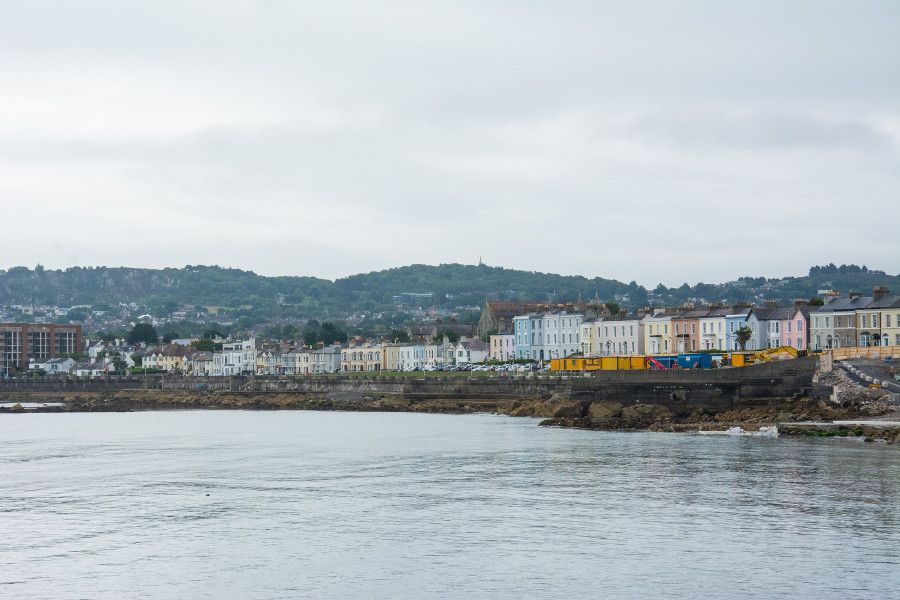

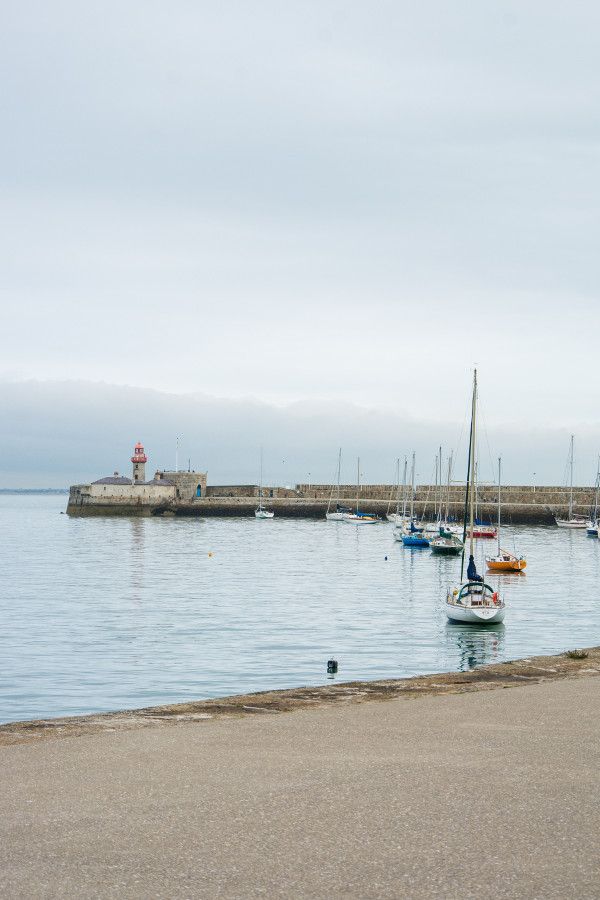
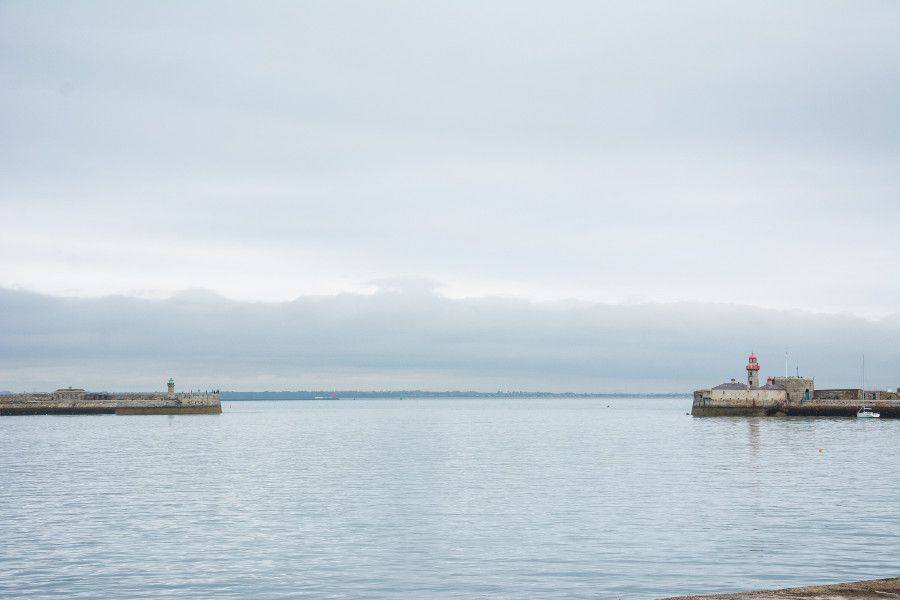
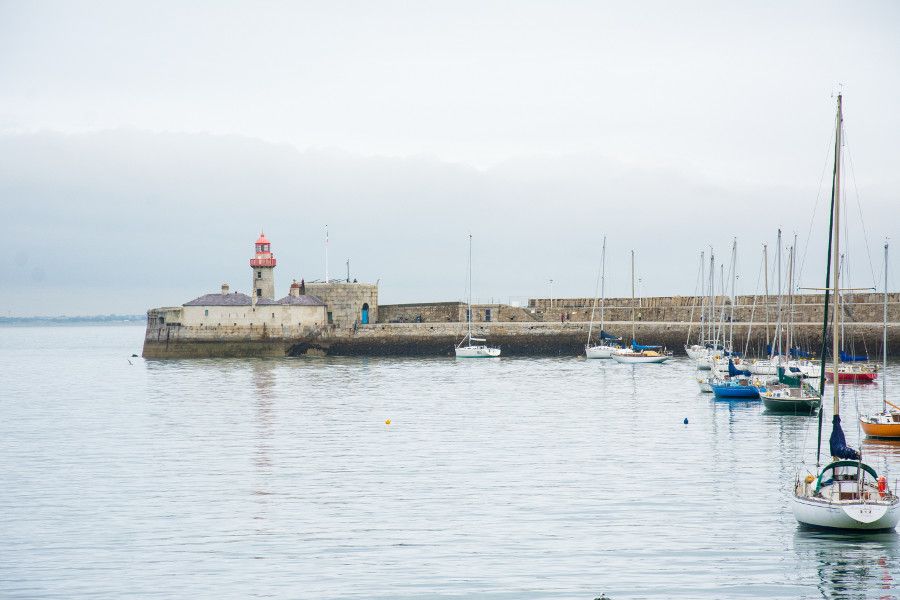
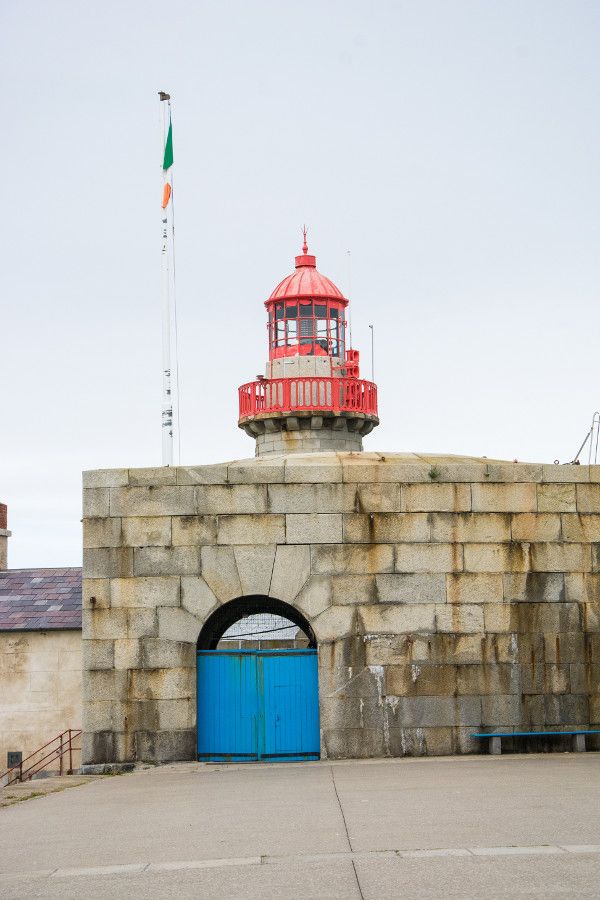
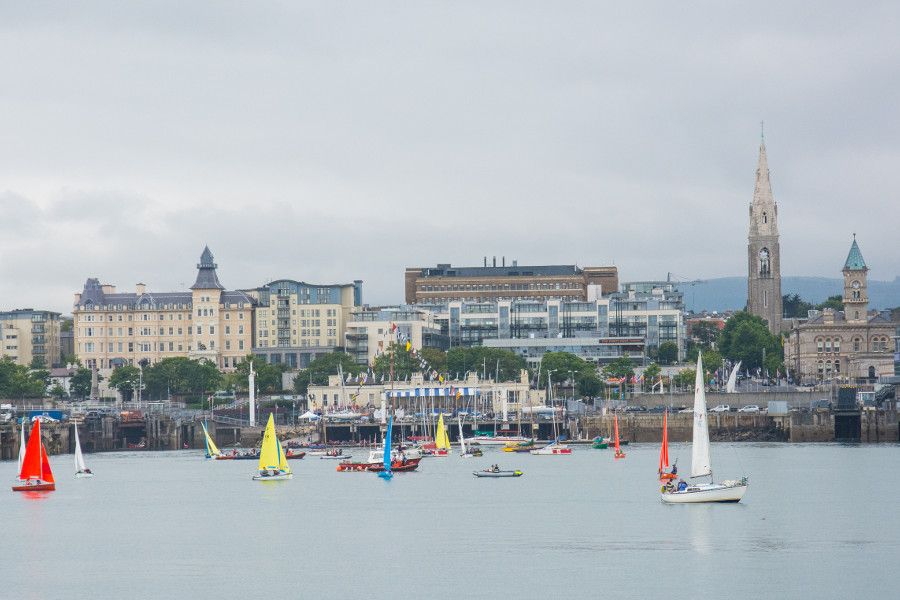
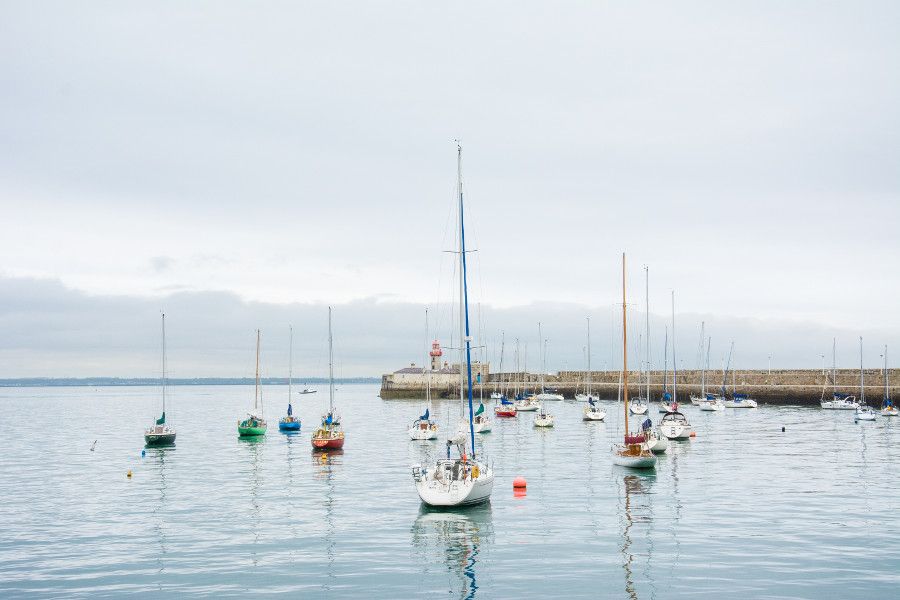
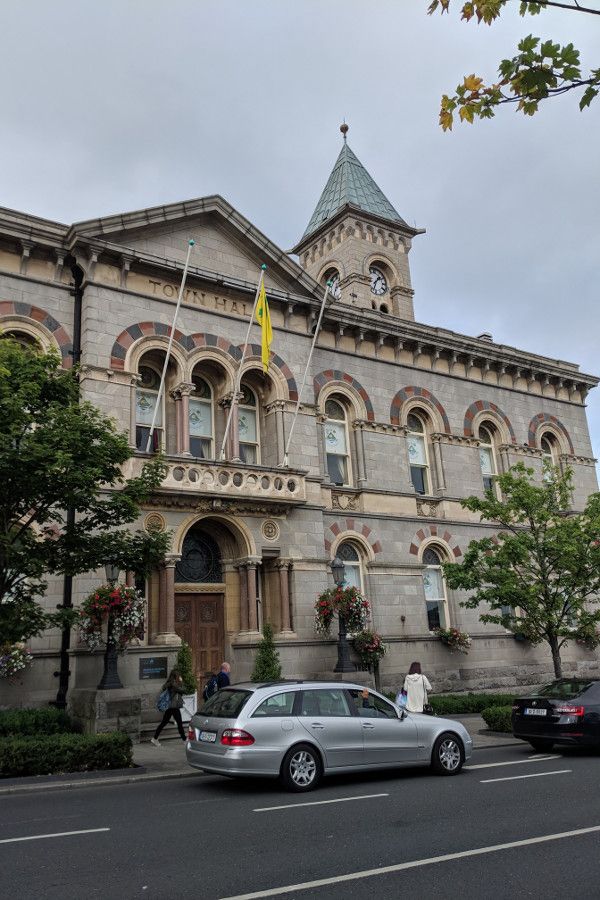
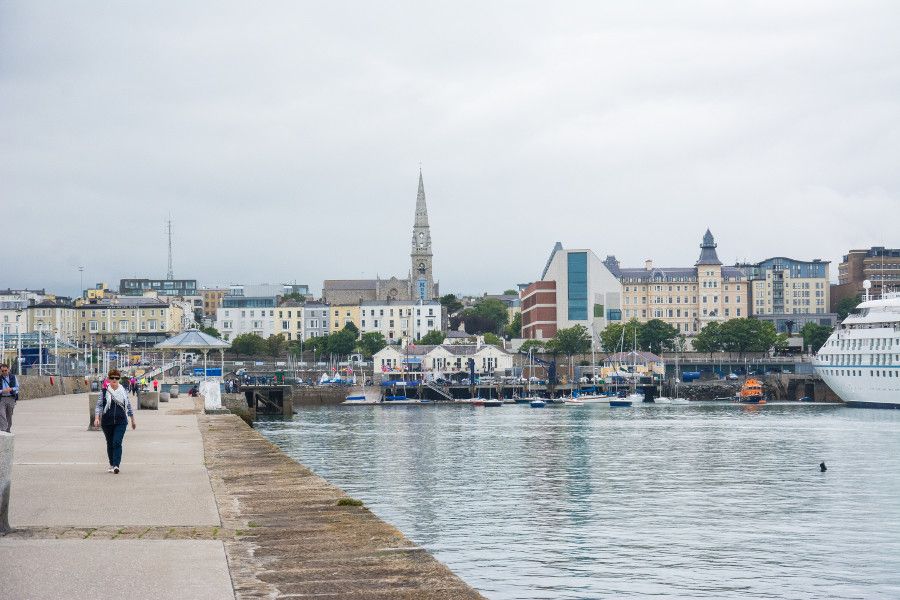
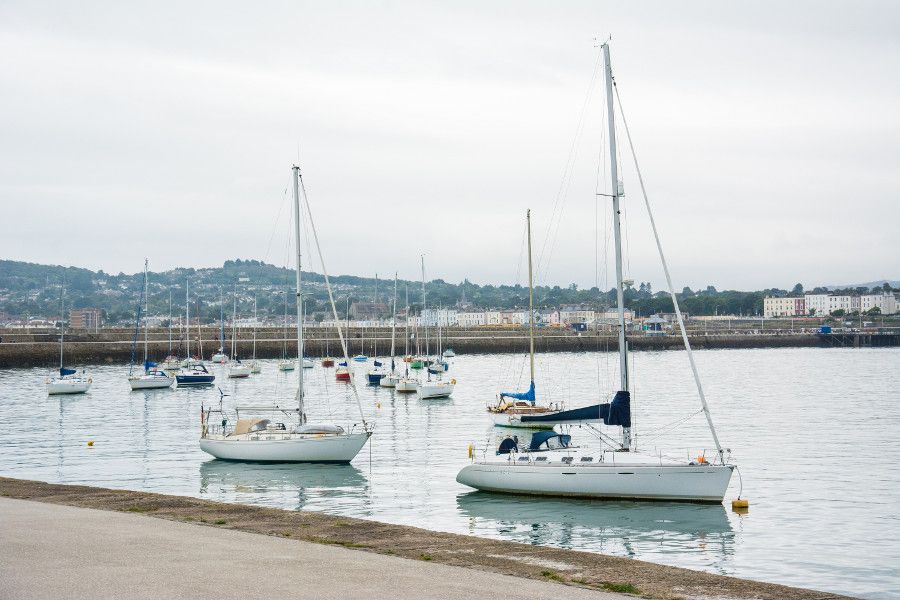
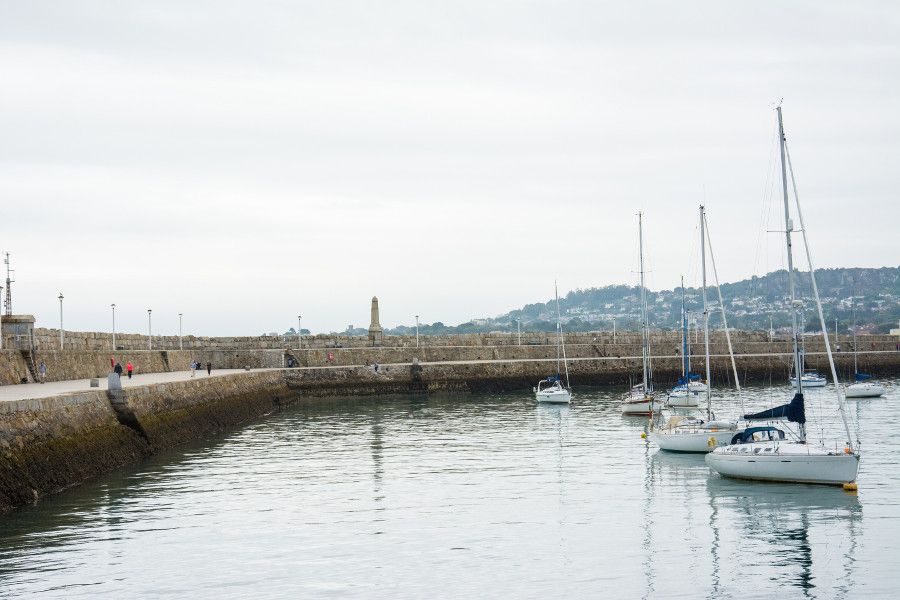
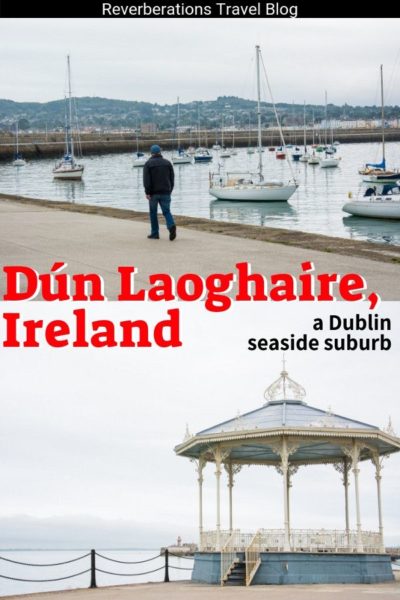
Oh what an amazing post! Great captures <3
http://carmelatte.co/santorini-wedding-how-much-is-it-is-it-overrated-or-a-dream-come-true/
I stayed here with my best friend when we were 18 as a treat for finishing college. We had a great time, but being young, we spent more time drinking than exploring! You’ve inspired me to visit again and do things properly!
Lovely writing! I’m saving this to when I visit Ireland. Your pics are amazing, well done!
Your article is good, but Irish people would be horrified that you call Dún Laoghaire ‘a Dublin seaside suburb.’ It’s a town in it’s own right, completely separate from Dublin, though it’s become part of the Dublin metropolitan area as time has gone by. In Ireland, as in Britain, small towns and villages have grown over centuries to the point where some of them have become merged into bigger towns or cities, but they’re still considered ‘towns’ or ‘villages’ by the locals, definitely not suburbs…
Hi David, I appreciate the insight. I think this is a term whose definition varies culturally. In my experience (in the USA) “a suburb” is a city or town outside of a more major city, in this case, Dublin. That isn’t to take anything away from the town or village, but simply to say it is in the area just adjacent to a major city.